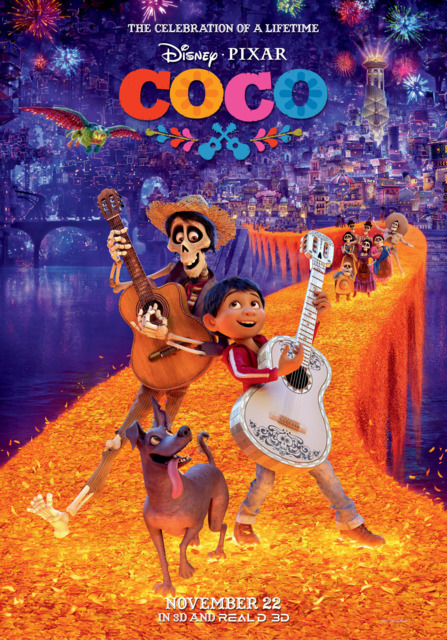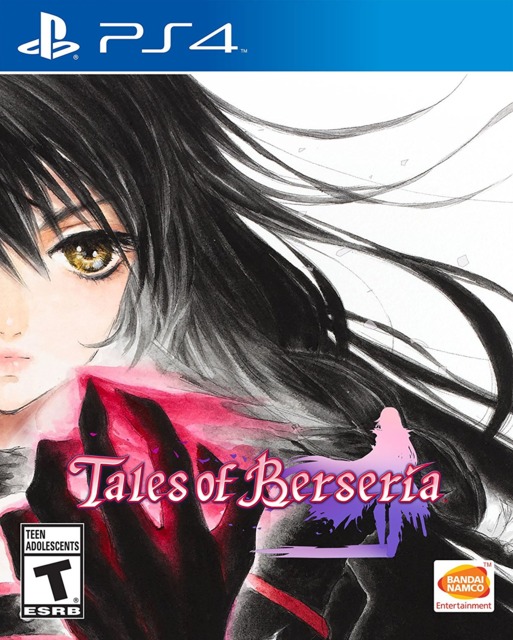Saturday Summaries 2018-10-27: Spooktacular Edition
By Mento 4 Comments
Naturally, as we're only a few days from Halloween and I've spent a sizable portion of this month watching horror game LPs, I've been thinking about survival horror and its aberrant status in terms of genre and its codified conventions. What we accept as "survival horror" usually boils down to running around exploring dilapidated structures while solving inventory puzzles and evading or fighting off hostile monsters. Like most genres, newer developers working within the space frequently seek to subvert the more instantly recognizable attributes, making it hard to define what survival horror is beyond the inclusion of zombies and ghosts gnawing on the ol' gray matter.

For instance, many horror-themed games don't strictly qualify as survival horror. Resident Evil's been through a journey in its many years, gradually moving away from the idea that you only have a finite supply of ammo on hand with the ideal solution instead being to avoid most of the slow-moving goobers as best you can and save the firepower for the boss fights. With Resident Evil 4 through 6, that issue became less of a cornerstone of the franchise and instead you were frequently expected to fight your way through action-packed scenarios, many of which followed the motions of a typical third-person shooter: take the "sieges" of Resident Evil 4 where you had to defend a location from waves of zombies as they broke in through windows to reach you. It's no accident that this would also become the basis of the "zombies" mode of many recent Call of Duty games, or something like Valve's Left 4 Dead multiplayer franchise. Resident Evil then did an about turn for its latest entry, Resident Evil 7: Biohazard, returning to a mansion filled with monsters and strict limitations placed on how effectively you could defend yourself. You could easily make the case that Resident Evil stopped being "survival horror" at one point and then returned to it.
But how strict do you have to be in this regard? Is it similar to roguelikes or spacewhippers where the format is very clearly and unambiguously demarcated? Does a survival horror game "lose points" if they give you weapons rather than forcing you to run and hide? Does it matter if there's many or few notes to read or key puzzles to suss out? When non-combative "walking simulators" like Gone Home (which knowingly toyed around with survival horror tropes) and Firewatch started making the rounds, people seemed adamant that they didn't count as adventure games because of certain missing characteristics, but horror-themed walking simulators like PT now seem to be the accepted norm for the survival horror genre, especially where Indies are concerned.
The core of this sort of argument always seems to boil down to "video game genres are busted", and I'd be as hard-pressed to properly define what is and isn't a survival horror game as I would for almost any other genre. The definition's only become muddier with games like The Forest or DayZ, which are actual "survival horror" games in the sense that you're responsible for maintaining your character's warmth and hunger meters but also must fend off the undead and hold onto your sanity. Where does one draw the line between horror as a game genre and horror as a game theme (as defined by our wiki)? Maybe survival horror was never a real thing to begin with, and we'd be better off letting it go so we can focus on introducing horror to more genres that already exist. I'd certainly be down for more horror RPGs like Vampire: The Masquerade - Bloodlines or the upcoming Call of Cthulhu: The Official Video Game from Cyanide. Just as long as they aren't too spooky, you know? Some of us prefer to sleep easy.
If you have trouble sleeping yourself, might I suggest one of the following blogs? Wait, that sucks at a segue, let me try again: Howdy folks! Ain't nothing more electrifyin' and invigoratin' to the senses than reading about some decade-old Japanese adventure gamezzzzzzzzz:
- The Indie Game of the Week was Iconoclasts, the 2018 spacewhipper from the Noitu Love guy Konjak. I'm a sucker for games of this type as any regular readers of this feature would've cottoned onto by now, though becoming a connoisseur frequently means seeking out those that are rare and exceptional. After all, the formula's been so well-worn by now that you really need something other than "it's like those '90s games you liked!" for a hook to hang your game concept on. Iconoclasts has a flair for the dynamic and cinematic - its twisty, event-packed plot is almost movie-like in its execution - but is a fairly solid if unremarkable game of its type otherwise. There's at least five or six more games of its specific model out this year alone that I'd like to cover with this feature further down the road, so I wonder how long Iconoclasts will leave an impression.
- My alternating Tuesday slot was dedicated to another one-off feature, and one I've been looking for an excuse to write: CING Inc. Their Praises, an ode to the Japanese adventure game developer CING, and their work in helping to elevate Nintendo's DS and Wii platforms at a time when both were still finding their respective voices. CING games tend to be on the quiet and contemplative side, not so much thrilling you every other second but allowing you to luxuriate in their prose and atmosphere. The exception being the wonderful Little King's Story, which saw CING stretch their legs a little with something off-kilter and mechanically distinct from their other works. I plucked out five of their best games for this retrospective to give readers a decent sense of their impact on the industry, or at least make the case for why this lifelong adventure game fan was so attached to the former studio.
Addenda
Movie: Coco (2017)

The last week of October is all about being scared stupid, so I searched my particular streaming media service for the scariest movie I could find. Coco, Pixar's Mexican-themed animated movie from last year, not only features skeletons but skeletons that play the guitar. Truly, a more horrifying image could not be found in the mind of even the most deranged monster.
All right, so I wussed out and went for a life-affirming kids' movie about family and music instead of a video nasty, but in my defense I try to keep up with everything Pixar puts out that doesn't involve alive automobiles. Even on their off days, Pixar is still the best western animation studio in town - though Disney's own in-house studio is no slouch either - and they're at their best when they have a movie with a novel concept and no small amount of earnest heart. Likewise, both Pixar and Disney (though they're more or less the same entity these days) have been on a streak when depicting foreign cultures in film, ever since the misfire with the too-serious and not particularly accurate Pocahontas. They not only focus on getting various institutions of the culture right, but ensure the film's visual identity is also germane to the territory they draw from. At the same time, they don't let all this cultural immersion get in the way of a solid and relatable story at the core. That's certainly the case for Coco.
I'm not going to bother synopsizing the plot because it's simple enough, and fairly predictable too. The Mexican day of the dead, Día de Muertos, has been depicted in fiction in various forms (most notably in our neck of the woods in LucasArts'/Double Fine's Grim Fandango) and has its own colorful and rich visual language that seems perfect for a lush animated feature. Of course, I imagine the difficulty is figuring how to market a movie full of skeletons to kids: Coco turns all the dead ancestors of its hero Miguel, who temporarily passes over after playing a cursed guitar (OK, maybe I did need to describe the plot a little), into comedy constructs and quickly cycles through a dozen goofs involving detachable bones and skulls early on in the movie when Miguel is still adjusting to his visit to the Land of the Dead. The buffoonish behavior and the fact that they all have eyes - something Grim Fandango eschewed - I think made them a little more accessible than the usual scary spooky skeletons. It sounds like a complete nonsense tangent to worry about how kid-friendly some animated skeletons are, but it's one of those aspects I bet the Pixar animators and artists tortured themselves over in development, and finding the right balance of scary and wholesome was probably a large part of the pitching process to Disney's higher-ups. I picture those talks being like RedLetterMedia's thorough examination for why the Na'vi of Avatar look the way they do: very carefully designed top-to-bottom for maximum audience appeal.
Coco's one of those movies that picks at the heartstrings and isn't afraid to be emotionally devastating even while spending most of its run-time dedicated to silly capers, chase scenes, upbeat mariachi musical numbers, and the antics of a goofy but loveable dog that looked and behaved like Santa's Little Helper's non-union Mexican equivalent. In many of those regards it's not too dissimilar to their last movie, Inside Out - both movies even have a really sad scene about the tragedy of being forgotten. I don't know where it sits in my personal rankings of Pixar originals, but I will say its Oscar was well-deserved (even if it didn't strike me as a close race given its closest rival was The Boss Baby).
Game: Tales of Berseria

Agh, the most irritating thing about weeks like this week - where I played the surprisingly substantional Another Code: R and Iconoclasts for their respective blog features - is that I barely carved out any time for Velvet and her anime journey of vengeance. My birthday also landed on this week, and I was graciously given a few 2018 games I'd like to sink my teeth into once my current slate is clean, but the end of Berseria is far from sight and looks to stay that way if subsequent weeks are as busy as this one. Still, there are definitely worse problems to have: I could've spent 100 hours of this week rendering realistic horse balls. Just sayin'.
At any rate, I don't have much more to say about Berseria this week, though I did get far enough unlock a few more of the game's features. One of these are the Expeditions: early on in the game you steal a small merchant ship and then fall in with pirates, which leads to recruiting your fourth party member. Since they give you full access to their galleon for travel, they decide to repurpose the one you stole for exploring the outer limits of the known world. I'm a sucker for Age of Discovery stand-ins - it's partly the reason Skies of Arcadia and Grandia are some of my all-time favorites - but in Berseria it recognizes that it can't simply pull your party out of the middle of a story every few minutes to go on a ship adventure. Instead, you send out a stalwart crew to various locations and get frequent reports back regarding what they've been up to. These reports are typically spaced 30 minutes apart - I don't yet know if this period eventually gets longer or shorter - and are built around ship battles you don't see: each expedition involves three battles, the success or failure of which is randomly decided, and the number of successes determines the treasure intake. Frequently, you'll find fish and other useful items, but there are also unique items that might serve to make future expeditions more bountiful or might provide a tangible benefit to your regular on-foot travels. It's a mostly hands-off experience, similar to the Chocobo World side-mode in Final Fantasy VIII or the assassin assignments in some of the Assassin's Creed games: you simply get alerted occasionally while playing the game that your crew has found a new haul of items, and then you spend a few moments checking out the booty before choosing where they go next. It's the sort of interruption that rarely intrudes on what you're doing and instead provides a sort of "oh hey, let's see what we got" positive surprise like a lootbox might (just without the microtransaction aspect - though Berseria's hardly innocent of those practices with all its paid item packs and XP boosters).
I've also been introduced to the game's equivalent of Vesperia's "Giganto Monsters": mini-bosses scattered around the world which are often harder than any story boss the first time you're capable of encountering them. They're really an excuse to come back later and try your luck against a powerful foe, and the reward for beating them are potentites: another invention of this game worth discussing. Potentites are key items that, when obtained, unlock some passive ability or game feature that either improves your fighting prowess or simply makes the game more convenient. Early on, key game features were locked within potentites - features like being able to drag multiple enemy encounters together on the overworld so you could fight them all simultaneously for greater rewards - an were dropped by story bosses, thus allowing the game to mete out these features gradually rather than dumping them all on you at once while you're still trying to figure out how the core gameplay functions. Other potentites, like the ones carried by these optional mini-bosses, provide benefits to make the game easier (or occasionally harder, like advanced difficulty settings for the truly brave) as an incentive to chase them down. What I love about finding these things is how often it might change the way I play the game completely: I now try to link together encounters as often as possible, because the XP gain and item drop chance are greatly boosted and makes battles that much more challenging without going overboard.
So that's another element that I appreciate about Berseria: even though I'm some 10-15 hours in, the game is still changing, still adapting to how I prefer to play games of its type, and between the expeditions and other side-objectives still gives me options beyond following where the excellent story is leading me. I'm hoping to sink a lot more time into it next week; that is, if the games for upcoming blog feature instalments don't monopolize it all again.

4 Comments